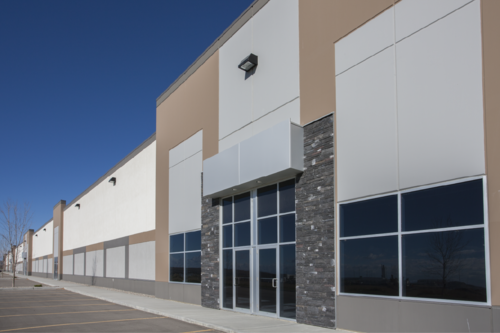One of the worst-ever years for real estate investment trusts signals opportunity for investors, according to research by an active investor in both the publicly traded and private real estate sectors.
According to the FTSE EPRA/NAREIT Canada Index, REITs in Canada were down 21 per cent versus a year ago as of Dec. 13.
The decline represents an aggressive pricing of the potential threats to the underlying assets, according to Corrado Russo, senior managing director, investments with Hazelview Investments in Toronto, which released its 2023 outlook for REITs this week.
“Obviously a big part of that being rising interest rates,” he said.
Public markets felt that interest rates would rise too far too fast and trigger a recession, depressing real estate values, but Hazelview’s research indicates that markets have been too negative.
“All of those concerns are valid to a certain degree but we just think the magnitude to which they’ve been priced in this year is overly aggressive,” he said. “For some sectors it’s more warranted, for other sectors it’s less warranted.”
It all comes down to the fundamentals, with particular asset classes more favoured than others. But all REITs appear to be tarred with the same broad, dark brush. This has allowed opportunistic investors to pick up portfolios at “large discounts” to the underlying assets while still offering investors a premium to the share price.
Hazelview’s report calls out Summit Industrial Income REIT’s acquisition in November by GIC and Dream Industrial REIT for $5.9 billion, a 31 per cent premium to its previous day’s share price. Summit owns 176 properties, including 15 under development. The transaction is set to close in early 2023.
While net rental income showed strong growth in its most recent quarter, Summit’s overall net income declined significantly due to “fair value adjustments” to its investment portfolio.
“Economic fundamentals were thrown out the window in 2022, and I think they come back in 2023,” Russo said of the situation facing many REITs, even those in relatively strong sectors such as industrial, like Summit.
Russo pins his optimism on the fact that rental revenue at most properties has yet to catch up to the rents landlords are securing today, rates that are often 60 to 80 per cent higher than they were three years ago.
In Vancouver, for example, Colliers reported industrial lease rates averaging $20.44 per square foot in the third quarter, up 68% from $12.20 three years ago. In Saskatoon, Colliers reported an average asking rate of $11.36 per square foot, up 18 per cent from three years earlier.
“While rents are up that much, it doesn’t mean the companies have captured that,” he said. “It takes several years, because of contractual leases, to actually catch up to where market rents are, so we’re seeing a host of companies that have an ability to grow from high single digits, low double-digit earnings, over the next two to three years in the absence of rents moving at all.”
This is particularly true for industrial and multifamily assets, which are seeing strong demand and a lack of new construction.
“We believe multifamily and industrial are two of the industries that have the best tailwinds for the better part of the next five to 10 years,” Russo said. “We have capital at work, most of our incremental capital over the last couple of years have gone to those industries.”
But it’s not overlooking individual opportunities among asset types that are less favoured by current dynamics, including office, retail and hotels.
Hazelview’s own partnership with Aspen Properties on the acquisition for an undisclosed sum of Millennium Tower in Calgary is a case in point. Purchased at a significant discount, it is being repositioned to meet the new realities of the office market. Conversion underway to what Russo described as “an extremely high-quality amenitized building,” similar to its Edison and Ampersand projects.
“If you look at some of the past properties that Aspen has done that have been very successful, we’re pretty excited about that opportunity,” Russo said. “The assets that are very amenitized will take more market share from those that are more commodity-based. The office we don’t think is dead … but the office is going to change.”
Some of those repositioning opportunities will come through portfolio deals for publicly traded real estate trusts rather than the assets themselves.
“I can buy the underlying building at fair value or I can buy the paper that trades and have the management team that manages it for me at 25 to 30 per cent cheaper,” Russo said. “Historically, buying at a discount we’ve gotten outsized returns.”


